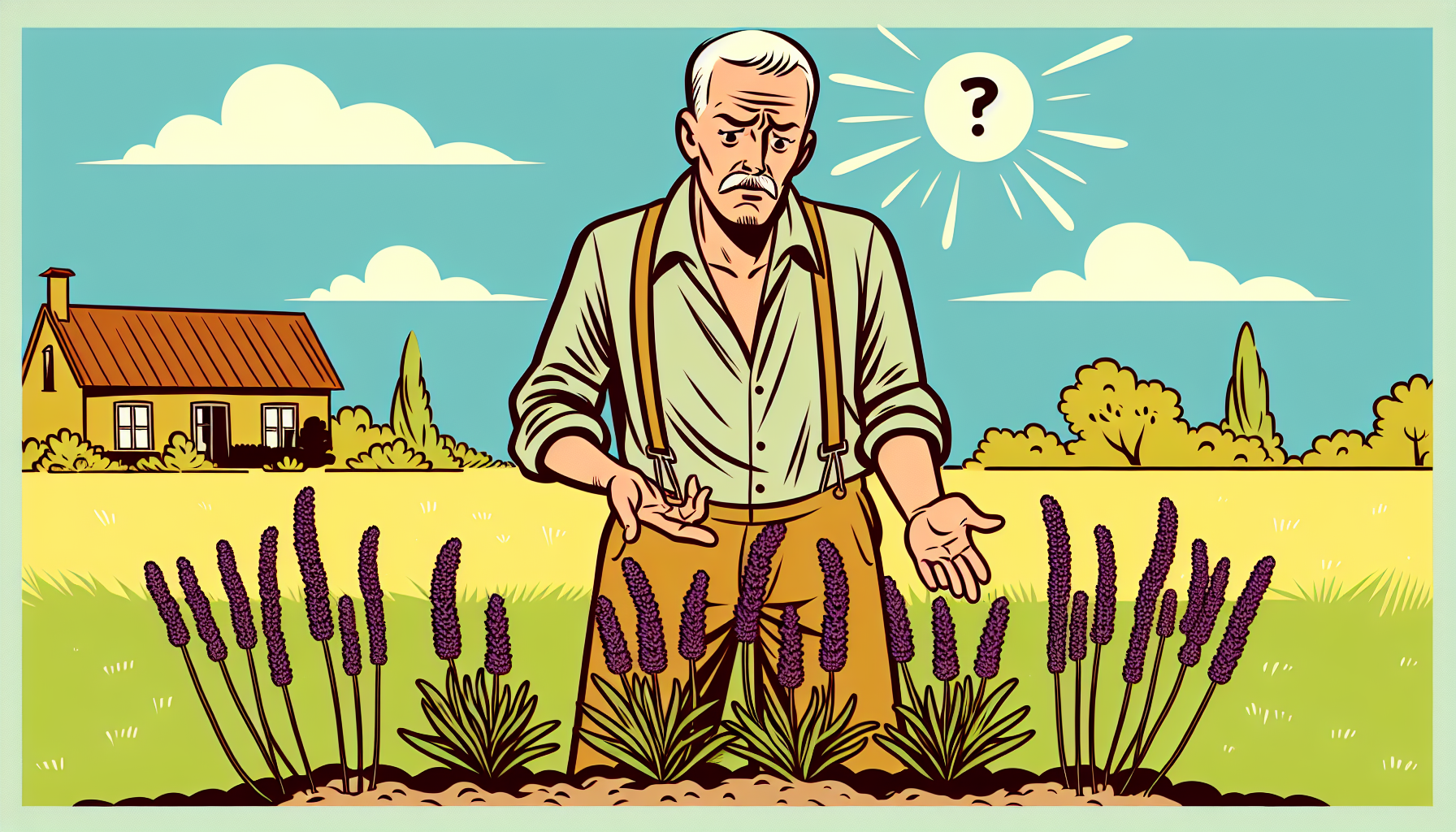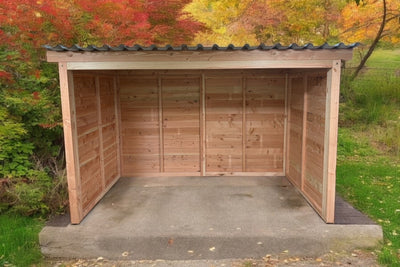Planting lavender in Switzerland: robust varieties and care instructions
Lavender is one of the most popular garden plants - and not just because of its soothing scent. It is experiencing a boom in Switzerland because it is robust, easy to care for and versatile. Many people are asking themselves: which varieties are suitable for our climate, how can they be planted easily and how can they keep flowering profusely for years? If you are considering planting lavender in Switzerland as a project, you will find practical answers for the garden, balcony and raised bed here. We show the benefits for people and nature, recommend suitable varieties for different regions and give specific tips on planting, care, pruning and overwintering. This will not only make your garden a fragrant eye-catcher, but also a valuable habitat for bees and butterflies - sustainable, water-saving and ideal for hobby gardeners.
Why plant lavender in your home garden?

Advantages of lavender for gardens in Switzerland
Anyone who wants to plant lavender in Switzerland will benefit from a robust, drought-tolerant perennial for the Central Plateau and mild Alpine valleys. It requires little water and thrives reliably even in poor, sandy-gravel beds.
The right species is hardy in large parts of Switzerland and can withstand temperatures down to around -20 °C, depending on the variety and location. At higher altitudes or in windy foehn valleys, light winter protection helps to prevent frost damage.
Lavender is an attractive plant with purple flowers, silvery leaves and compact growth. As a low hedge, border or container plant, it creates Mediterranean accents and provides clear structures in the garden.
Lavender as a fragrant plant and bee magnet
The typical scent is calming, attracts bees, bumblebees and butterflies and can also keep mosquitoes and flies away. In this way, you actively support pollinators and promote biodiversity right on your doorstep.
Especially in densely built-up areas, flowering lavender creates an ecological stepping stone. Combine it with other nectar-rich herbs if you are planning to plant lavender in Switzerland as a bee-friendly project.
Which lavender species are suitable for Switzerland?
Differences between the common lavender species
Before you plant lavender in Switzerland, it is worth taking a look at the most important species and their strengths in the Swiss climate.
- True lavender (Lavandula angustifolia): robust, aromatic, hardy to around -20 °C in sheltered locations; usually flowers from June to July.
- Spike lavender (Lavandula latifolia): vigorous growth, camphor-like fragrance; less frost-hardy, more suitable for mild locations and collectors.
- Lavandin (Lavandula × intermedia): Hybrid, very floriferous and strongly scented; hardy usually to -10 to -15 °C, ideal for sunny, mild locations or containers.
Recommendations for choosing the right variety
Varieties of Lavandula angustifolia such as Hidcote, Munstead or Blue Scent are suitable for most regions of Switzerland. They remain compact, have an intense fragrance and are reliably hardy.
Lavandin can also do well in vineyards or in Ticino. Plan for winter protection or frost-free overwintering in a container if you plant lavender in Switzerland in climatically exposed locations.
Lavender is considered non-toxic and is rarely touched or ingested due to its intense aroma. This makes it a good choice for family gardens and paths around seating areas.
Where and how is lavender best planted?
Choice of location: Light, soil and space requirements
The following applies to planting lavender in Switzerland: Choose a full-sun, warm spot with at least six hours of sun per day. Stone and herb beds, dry stone walls or a south-facing wall are ideal.
The soil should be well-drained, calcareous and low in nutrients. In heavy soil, loosen up with sand or gravel; waterlogging quickly leads to root rot.
Plan 30-50 cm spacing per plant, depending on the variety. Groups create a dense, fragrant carpet that is particularly effective both visually and ecologically.
Tips for planting and planning the garden
The best time to plant is late spring, as soon as there is no longer any threat of late frosts - in German-speaking Switzerland usually from mid to late May (Ice Saints around May 11-15). Earlier planting is possible in Ticino.
How to plant lavender in Switzerland in three steps: Loosen the soil deeply and improve it with gravel/sand, place the seedlings at pot height and water thoroughly once. Then only water in the event of prolonged drought.
- For balconies, use large pots from 20-30 cm in diameter, with drainage and drainage holes.
- In raised beds, make sure the substrate is very well-drained; lavender loves lean mixtures without a lot of compost.
- When planted under roses, lavender reduces aphid pressure and adds structure to the planting.
How do I care for lavender properly?
Watering, fertilizing and pruning
If you see planting lavender in Switzerland as a long-term project, you should take a cautious approach to watering. After growing, only water during longer dry periods and avoid waterlogging.
Avoid nitrogen-rich fertilizers; a sparing herbal fertilizer with a high potassium content or a thin dose of compost in spring is sufficient. Too much food leads to soft growth and fewer flowers.
Pruning is crucial: cut back by about a third in March/April, do not cut woody shoots radically. After the main flowering in July/August, remove the inflorescences to maintain shape and flowering.
Seasonal care: From flowering to winter
Faded stems can be made into scented sachets, bouquets or bath additives. You can also use the harvest as a DIY project when you plant lavender in Switzerland.
Do not prune heavily in the fall. In harsh locations, protect with fleece or fir branches; place containers on a sheltered house wall or overwinter in a cool but frost-free place.
What common mistakes should I avoid?
Mistakes when planting and choosing a location
Soil that is too dense, moist and rich in nutrients is the most common reason for failures. If you are planting lavender in Switzerland, make sure you provide drainage and a lean substrate in advance.
A shady location weakens the plants, encourages aphids and reduces flowering. Early, strong sunlight is crucial for compact, vital bushes.
Tips for preventing pests and diseases
Healthy, properly planted lavenders are rarely ill. Aphids are more likely to occur on weakened plants; prevent them by planting in sunny positions, providing good ventilation and watering appropriately.
- Avoid root rot caused by waterlogging: permeable substrate and appropriate watering practices.
- Reduce gray mold in damp weather: plant airily and prune after flowering.
- In case of infestation, use plant strengthening agents such as diluted nettle slurry.
Anyone planting lavender in Switzerland as a balcony project should pay particular attention to drainage and rainwater run-off. Empty the saucer regularly to prevent the roots from standing in water.
How sustainable is growing lavender in the garden?
Environmentally friendly cultivation methods
Lavender requires little water, hardly any fertilizer and no pesticides. It therefore fits perfectly into nature-oriented concepts and is ideal if you want to plant lavender in Switzerland in a sustainable way.
In mixed cultivation with roses, thyme or sage, lavender strengthens the garden structure. Stone mulch made from lava stone improves drainage, retains heat and suppresses weeds.
Quality and longevity: lavender as a resource-saving plant
Planted correctly and pruned annually, a lavender plant can remain vital for up to ten years or longer. This conserves resources and reduces replacement purchases.
If you prefer regional organic plants from Swiss nurseries, choose plants that are adapted to the climate and soil. This pays off if you plan to plant lavender in Switzerland in the long term.
Costs and budget planning for lavender in the garden
Investment costs and ongoing maintenance costs
Lavender is inexpensive to buy; 1-liter potted plants usually cost in the single-digit to low double-digit CHF range, depending on the variety and cultivation method. Care remains cost-effective with little water and minimal fertilizer.
Drainage materials such as gravel or lava stone are worthwhile for long-lasting beds. This reduces failures and pays off if you plant lavender in Switzerland with several years in mind.
Tips for cost control and when buying plants
Cuttings can be made in July from non-flowering shoots in a mixture of sand and sowing soil. This is a cheap way to propagate varieties and obtain uniform plants.
When buying, look for strong, compact young plants without mold. Regional suppliers often provide better-hardened plants - ideal if you are planting lavender in Switzerland at different altitudes.
If you buy larger quantities directly from Swiss herb nurseries, you will benefit from fair prices and expert advice. This keeps the project calculable.
Conclusion: Lavender - an asset for every Swiss garden
Lavender is much more than just a fragrant plant: it is ecologically valuable, easy to care for and long-lasting. If you plan to plant lavender in Switzerland, you will have a reliable partner for beds, pots and balcony boxes.
With a sunny location, well-drained substrate, moderate watering and two cuts per year, lavender will remain vital for many years. Start your garden project now and bring the scent of Provence to your Swiss garden.


